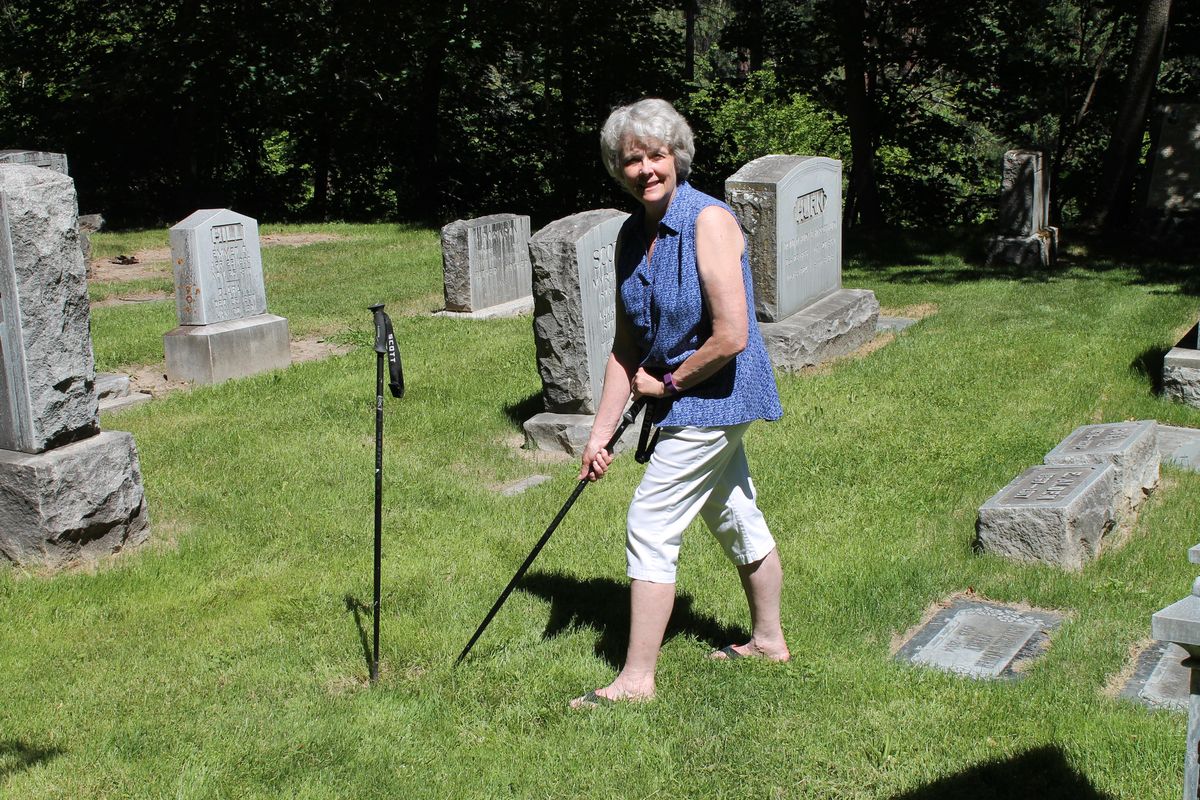Citizen Journal: Poking around the cemetery, ski pole in hand, for genealogical society

My wife came to me with a couple of ski poles. “Can you remove the baskets and sharpen the tips?”
The baskets are the round shields that keep the poles from sinking deep into the snow and the tips are the pointed things a few inches below the baskets.
I reluctantly agreed to do as she asked. I am not the Husband of the Year. I often cause my wife aggravation. I hoped the sharpened ski poles would not be used on me during those aggravating moments.
I came out of the work shop and handed my wife the ski poles, redone as she asked.
She seemed pleased and said, “Now I am going to the cemetery.”
“Cemetery?”
“Society business.” She meant the Eastern Washington Genealogical Society business. I lost her to that organization a while back. If she is not on the computer tracking down dead people, she is out in the field tracking down dead people. She leaves me alone to make my own way among the living.
“You need sharpened spears to protect yourself in the cemetery?”
“No. I use the poles to find headstones buried below the grass.”
“How could that happen?” I asked. “Lawn clippings cover up the headstones?”
“Some of the buried headstones are a hundred years old and were not tended during the passage of time,” she explained. “Dirt, melting snow, tree leaves, grass clippings and the gravity’s pull on heavy granite contribute to the sinking of headstones. We push the sharpened ski poles into the ground. Sometimes we hit big rocks, sometimes a lost grave marker buried 6 inches below the sod.”
“You randomly poke into the ground?”
“No. The Eastern Washington Genealogical Society receives requests from all over the world to locate lost headstones in our area. Families who cannot make the journey to Spokane, want a photo of their dead relative’s headstone. The Society contacts the cemetery. The cemetery officials look up the name location and provide us with copies of ancient cemetery maps showing where the grave should be.”
“So the pokes in the ground are guided by the cemetery concierge?”
“Caretaker, maybe curator. Not concierge.”
“That’s my graveyard ignorance showing,” I responded to her cemetery shaming.
My wife continued to enlighten me, “Often the targeted headstones are standing upright, easily viewed. We give the headstone a cleaning, trim the nearby grass and take a photo. Other headstones are buried under dirt, so cleaning them requires digging. We take a photo of the headstone and post it on a website, then send a copy to the requesting family members.”
Genealogical societies exist worldwide. If you want a photo of some long dead ancestor’s gravestone and you have a notion of the location where your relative might have given up the ghost, contact that area’s genealogical society or go online and click on one of the many websites that will send you a photo of the marker above your Aunt Edna’s final resting place.